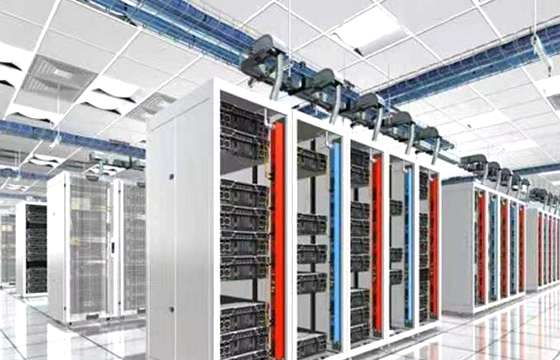

The low air leakage rate of a raised floor system refers to its ability to minimize the volume of air that escapes from the controlled environment of the underfloor plenum to other unintended areas. This characteristic is particularly crucial in settings where air distribution and climate control are integral to the facility's operations, such as in data centers, server rooms, and spaces that require precise temperature and humidity control.
Energy Efficiency: A low air leakage rate ensures that the air conditioning systems are not overworked. By maintaining air precisely where it is needed, the system can operate more efficiently, reducing energy consumption and costs.
Effective Cooling: In environments like data centers, effective and efficient cooling is critical. Low air leakage ensures that cool air is delivered directly to hot equipment without significant losses en route, thereby enhancing the cooling effectiveness.
Cost Savings: Reducing air leakage helps in lowering the operational costs related to heating, ventilation, and air conditioning (HVAC) because the systems do not need to compensate for lost air.
Environmental Control: Maintaining a low air leakage rate helps in sustaining the desired environmental conditions, which is essential for the protection and optimal operation of sensitive equipment.
The performance of raised floors regarding air leakage is often measured against specific industry standards and tested under controlled conditions. For instance, the General Services Administration (GSA) in the United States specifies that raised floors in data centers should have an air leakage rate of less than 2% at 0.1 inches of water gauge pressure differential.
Manufacturers might employ various techniques to achieve low air leakage, such as:
Sealing Gaps: Utilizing grommets, brushes, and seals around cable cutouts and floor panel edges to prevent air from escaping.
High-Quality Panels and Fitments: Using precisely engineered floor panels and cutting-edge manufacturing techniques to ensure a tight fit between panels.
Regular Maintenance: Ensuring that the floor system is regularly inspected and maintained to address any areas where leakage might occur over time due to wear and tear or displacement of panels.
Achieving a low air leakage rate is essential for the efficiency and effectiveness of raised floor systems, particularly in technologically intensive and environmentally sensitive installations. This feature underscores the value of choosing high-quality raised flooring systems and underscores the need for careful installation and maintenance practices.